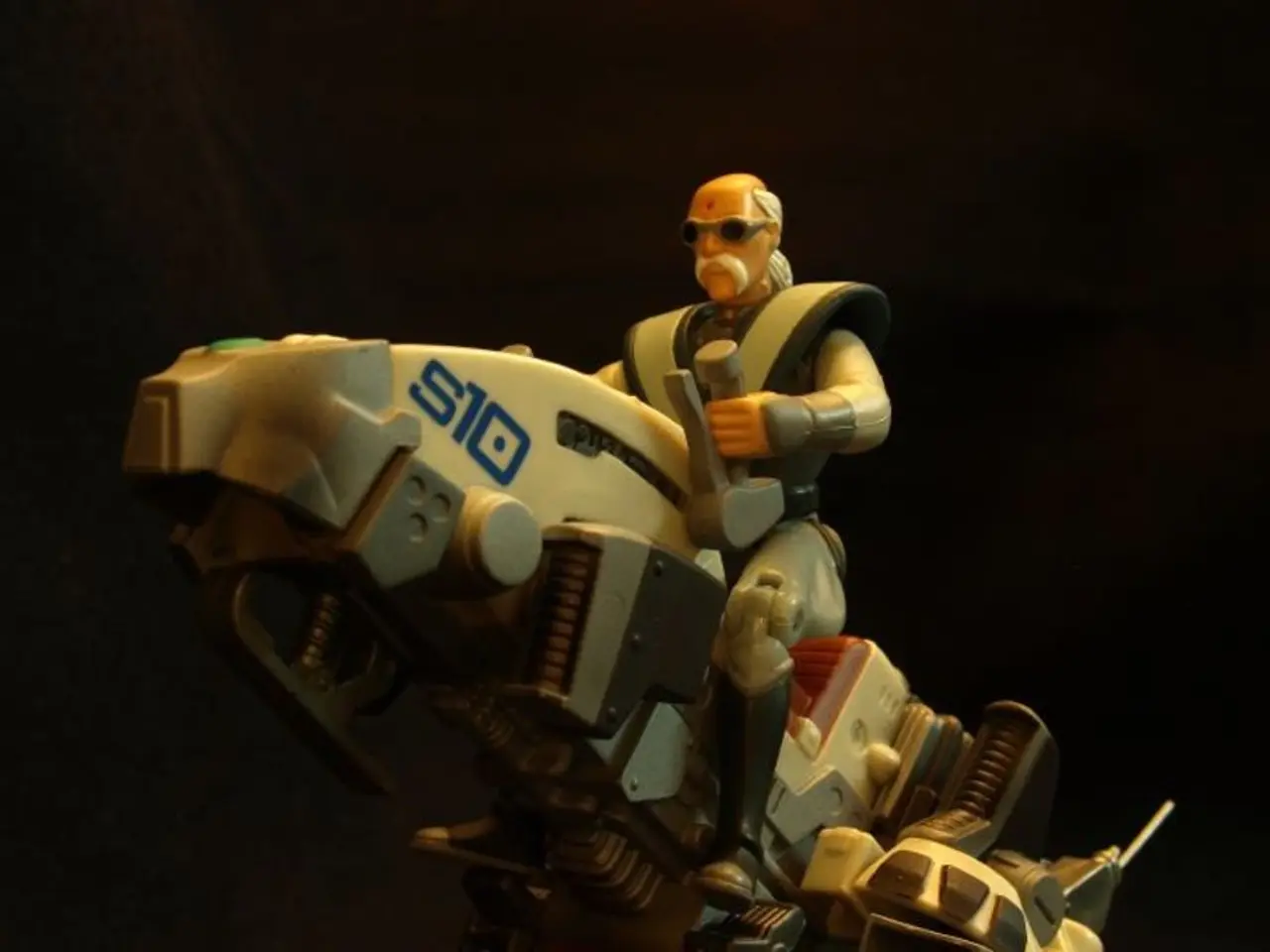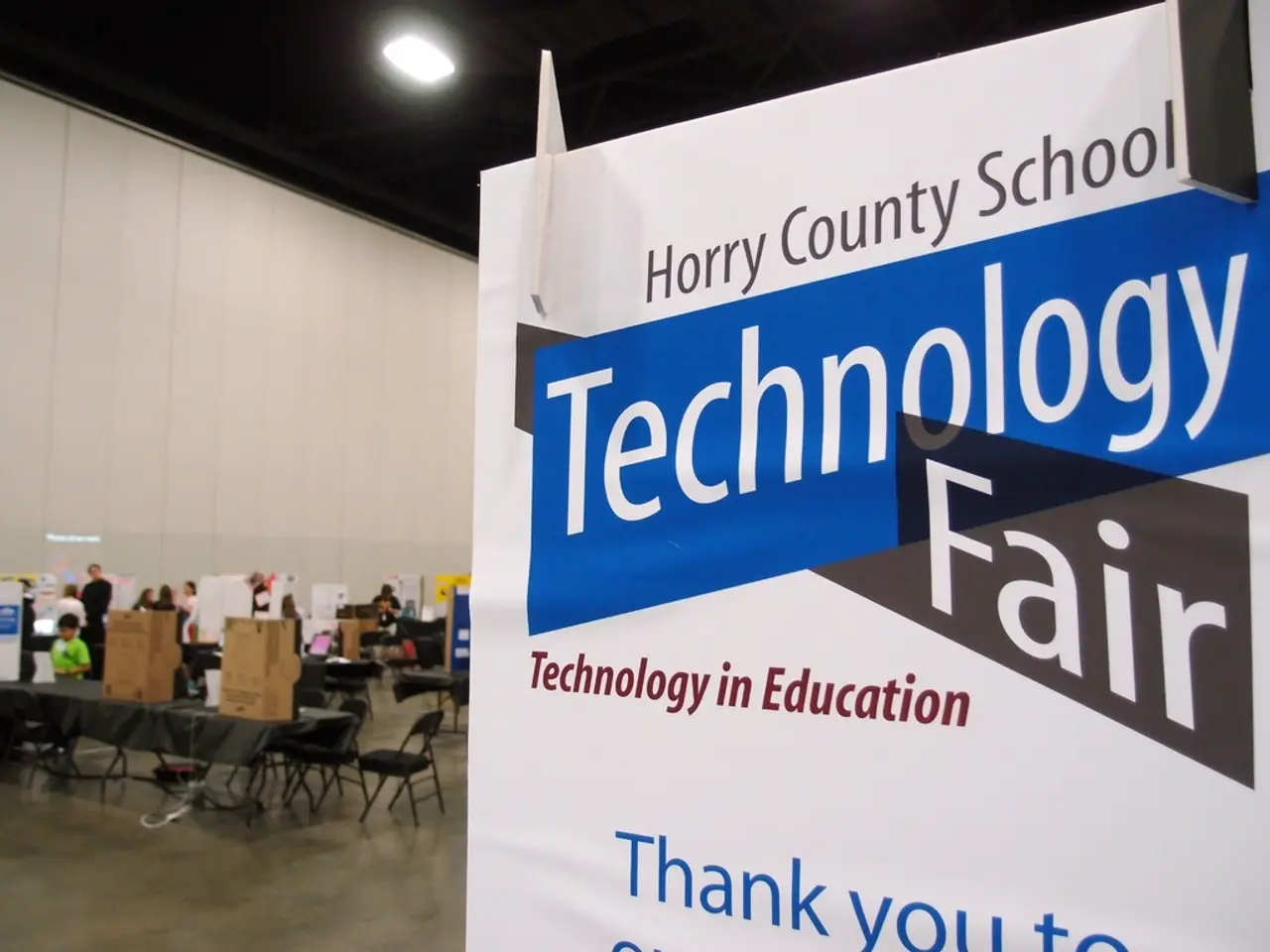Tesla Shifts Focus Towards Robotics Development
**Tesla Transforms from EV Pioneer to Tech Giant: A Look at its Business Model Transition**
Tesla, the pioneering electric vehicle (EV) manufacturer, is undergoing a significant transformation. The company is evolving from a pure-play EV company into a diversified technology powerhouse with strong footholds in energy storage, AI-driven automation, and general-purpose robotics.
## Current Business Model
Tesla's core automotive business remains a global leader in EVs, but the sector shows signs of strain. In Q2 2025, Tesla delivered 384,000 vehicles and deployed a record 9.6 GWh in energy storage, highlighting its expanding role in the energy sector. However, recent financials show a 20% year-over-year decline in car sales revenue and a 71% drop in net income for the first quarter of 2025. Energy storage and solar solutions, however, are becoming increasingly important, creating a more balanced revenue mix and supporting Tesla’s sustainability goals.
## Transition and Expansion into Robotics and AI-Driven Automation
Tesla's ambitious business model transition is evident in its investments in robotics and AI-driven automation. The humanoid robot, Optimus, is being developed for repetitive tasks in manufacturing, logistics, warehousing, eldercare, agriculture, and retail. The goal is to mass-produce and commercialize these robots, opening up vast new markets beyond automotive. Optimus benefits from Tesla’s vertically integrated AI stack, which currently powers its autonomous driving technologies.
Tesla is also pursuing an ambitious robotaxi initiative, aiming for a global fleet of millions of autonomous vehicles by 2026. This vision seeks to redefine urban mobility and reduce reliance on personal car ownership. However, the robotaxi program faces substantial technical hurdles, such as perfecting AI algorithms for safe, camera-based autonomous navigation, as well as significant regulatory scrutiny.
Tesla’s Dojo supercomputer is designed to accelerate the training of machine learning models for autonomous driving and robotics. There are plans to potentially offer Dojo as a cloud service, creating a new, capital-light revenue stream. As Tesla advances its AI capabilities, it could generate high-margin revenue through enterprise licensing, AI-as-a-service subscriptions, and bundled hardware/software solutions.
## Financial and Strategic Implications
Tesla’s expansion into AI and robotics is intended to transition the company toward a platform-based business model, reducing its cyclical dependence on automotive sales and increasing its addressable market. Successful execution of these initiatives could significantly raise Tesla’s gross margins, especially through high-margin software and services revenue streams.
If Tesla delivers compelling results in AI and robotics, its valuation could shift from that of a traditional car manufacturer to a diversified tech platform, justifying higher market multiples. However, these ventures are high-risk due to large upfront investment needs and uncertain regulatory outcomes.
## Summary Table
| Area | Current Focus | Future Expansion | Key Challenges | |---------------------|---------------------------|---------------------------------|-------------------------------| | Automotive | Vehicle sales, EV market | Robotaxi, autonomous mobility | Sales decline, competition | | Energy Storage | Grid-scale deployments | Further integration with EVs | Execution, cost management | | Robotics (Optimus) | Development/testing | Mass production, new markets | Commercialization, safety | | AI (Dojo, FSD) | Autonomous driving, FSD | Cloud AI, enterprise licensing | Technical, regulatory risks |
In conclusion, Tesla's current and future business model is characterized by a shift from automotive manufacturing to a broader technology platform, with general-purpose robotics and AI-driven automation at the heart of its long-term growth strategy. Tesla's plan is to make "the machine that builds the machine," as Elon Musk's true long-term ambition is to create AI and robotics that can build future products autonomously. The company's strategy has been fully rolling out via a transitional business model, a "market hook" that creates enough traction to keep financing its ambitious long-term goal.
- Tesla's expansion into robotics and AI-driven automation is being driven by its investments in recent years, evidenced by the development of the humanoid robot, Optimus.
- Tesla aims to mass-produce and commercialize Optimus for various industries, including manufacturing, logistics, eldercare, agriculture, and retail.
- The robotaxi initiative, a vital part of Tesla's strategy, aims to deploy millions of autonomous vehicles globally by 2026, redefining urban mobility.
- Despite the promising vision of a robotaxi program, Tesla faces substantial technical hurdles, including perfecting AI algorithms for safe autonomous navigation and tackling regulatory scrutiny.
- Tesla's Dojo supercomputer, designed to accelerate the training of machine learning models for autonomous driving and robotics, may offer a new, capital-light revenue stream as a cloud service.
- If successful, Tesla's focus on AI and robotics could significantly increase its addressable market, reduce its reliance on automotive sales, and boost gross margins through high-margin software and services revenue streams.
- A shift in Tesla's valuation may occur if it delivers compelling results in AI and robotics, justifying higher market multiples and transforming the company from a traditional car manufacturer to a diversified tech platform.
- Tesla's business model transition, however, comes with substantial risks, including large upfront investment needs and uncertain regulatory outcomes.
- The company's long-term growth strategy is centered on creating AI and robotics capable of building future products autonomously, according to Elon Musk's vision.
- Tesla's capital-light, transitional business model is designed to create enough traction to fund its ambitious long-term goal and position the company as a key player in the global landscape of electric vehicles, AI, robotics, and sustainable energy.




